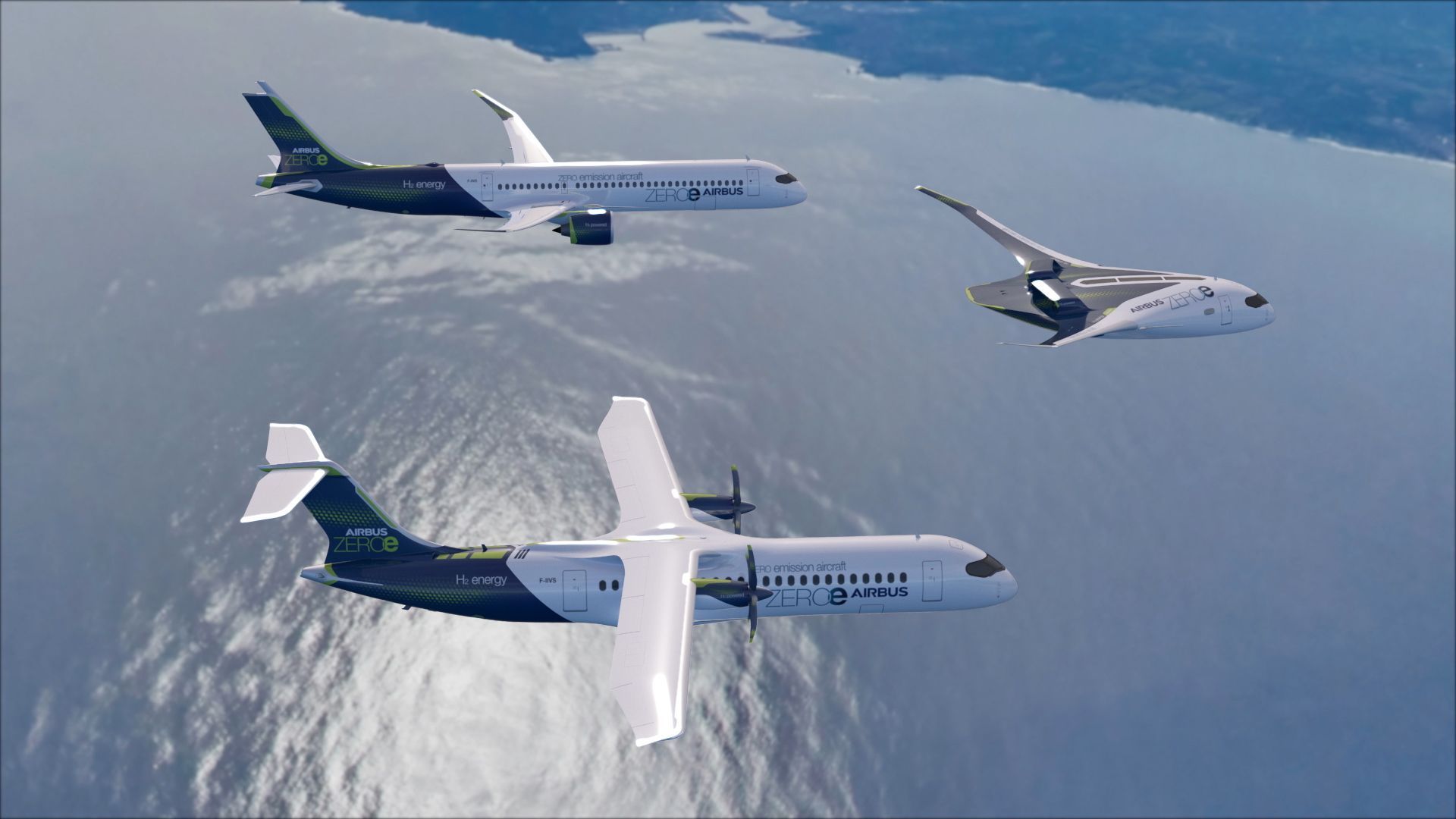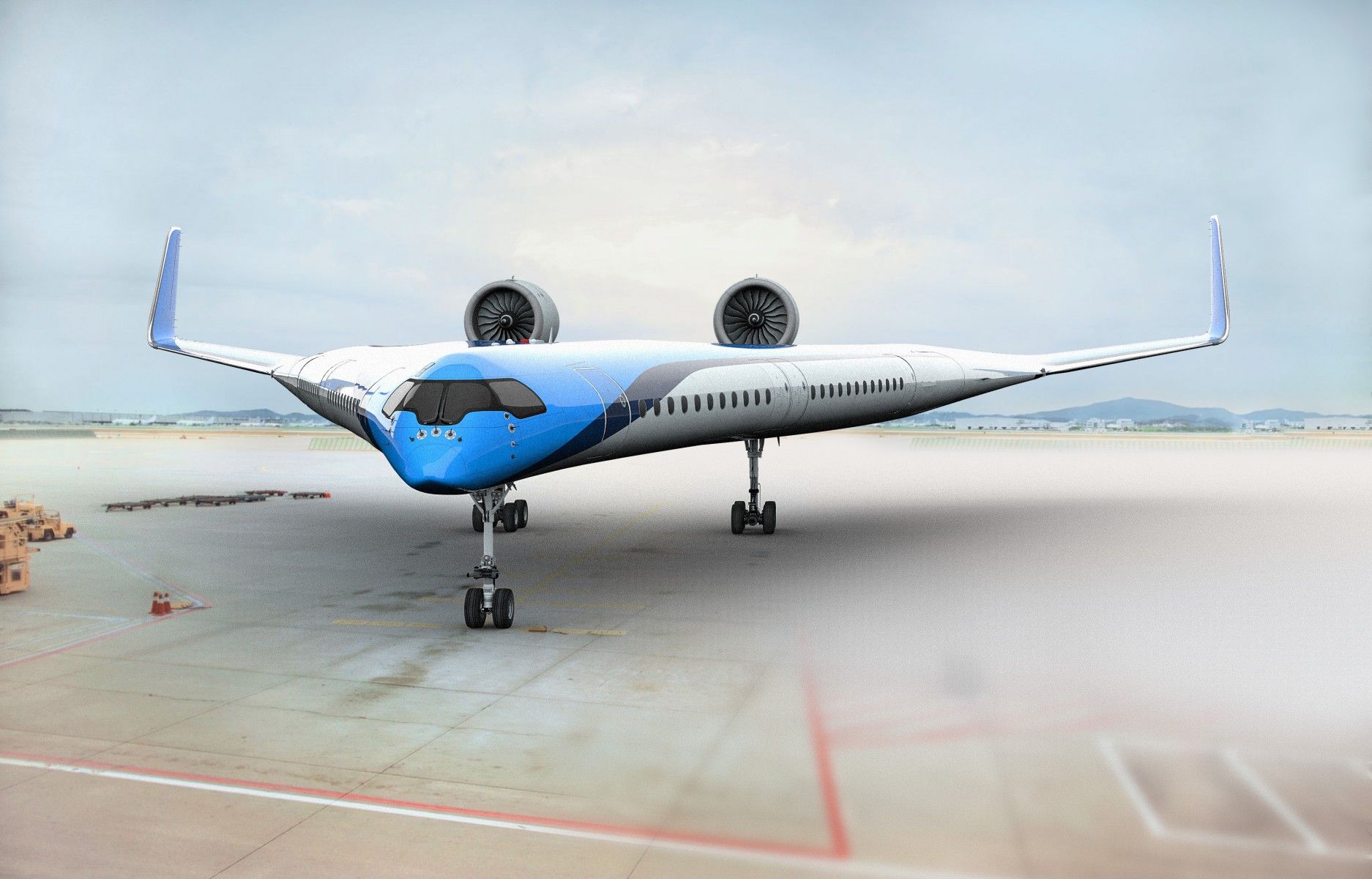Last week, Simple Flying highlighted the power efficiency of all-electric and electric hybrid aircraft compared to traditional fuel-powered aircraft. While the motor efficiency of both types surpasses that of gas turbine engines, the power output in unit terms is significantly less.
Batteries have 70 times less energy density than jet fuel, making them unviable. Moreover, there is a significant difference between the performance of a battery used for research and what can be certified as a power source for airliners.
Hydrogen-powered aircraft
Hydrogen has three times more energy density than jet fuel. When generated from renewable energy, hydrogen does not emit carbon dioxide. Hydrogen can be used as a power source for short-to-medium haul aircraft. Conventional gas turbine engines can be modified to use liquid hydrogen combustion. Pressurized air from the high-pressure compressor can be mixed with atomized liquid hydrogen for combustion.
Another method of using hydrogen for power is through hydrogen fuel cells to create electrical energy. Unlike the combustion process, fuel cells generate electricity through an electrochemical reaction. Fuel cells require a continuous supply of fuel and oxygen and hence can provide continuous electrical power, which is a limitation in battery-supplied electric power generators.
Hydrogen is a strong candidate to be used as the "fuel" for fuel-cell technology. Hydrogen-powered engines would be environmentally clean as they do not generate carbon dioxide and nitrogen oxide.
It is noteworthy that the size of a single fuel cell is only a few millimeters thick, and it does not generate much energy. Therefore, large stacks of electrically connected fuel cells and channels of numerous stacks are required to provide sufficient power to the aircraft.
Testing hydrogen technology
Earlier this year, Airbus launched the ZEROe demonstrator program to develop a zero-emission commercial aircraft by 2035. Airbus seeks to test various hydrogen-based technologies to be utilized in the future. Airbus plans to use the A380, the world’s largest passenger aircraft, as a test platform for the ZEROe program. The spacious double-decker cabin of the A380 makes it an ideal candidate for such extensive testing.
Airbus aims to install a hydrogen-powered gas turbine engine between the two rear doors on the A380 test aircraft. Liquid hydrogen storage tanks will be placed in the main cabin, and the engine will be fed through internal supply lines. Airbus is developing a test distribution system for liquid hydrogen to manage the supply at various flight conditions.
The system also enables pilots and test engineers to monitor and modify different parameters to achieve optimum power. With the ZEROe project, Airbus aims to scale the hydrogen fuel cell technology to power a 100-passenger aircraft for a range of up to 1,000 NM (1,150 miles/1,850 km).
In July 2020, TU-Delft and KLM showcased a conceptual Flying V aircraft design that could be based on hydrogen technology. The Flying V aircraft is a step away from the traditional tube-like fuselage and incorporates a blended-wing design to transport 300 passengers in the future.
Get the latest aviation news straight to your inbox: Sign up for our newsletters today.
Two hydrogen-powered turbofan engines on the rear of the aircraft provide power. Alternatively, the aircraft could be powered by hydrogen fuel cells that burn liquid hydrogen stored in specialized tanks.
Could hydrogen be a better alternative to jet fuel? Considering the efficiency of battery-powered electric motors and the advantages of liquid hydrogen, hydrogen technology does seem promising.
However, the challenges that come with the use of hydrogen for power are immense. Ongoing advancements in hydrogen technology infrastructure are expected to guide the feasibility of hydrogen-powered aircraft.
Do you think hydrogen is a better alternative to jet fuel? What about battery-powered electric aircraft? Tell us in the comments section.


